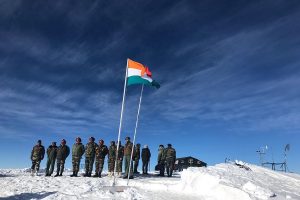Today’s Kolkata Port Trust was originally set up as “Commissioners for the Port of Calcutta” in 1870. The Port has a rich heritage and had seen the wrath of both World War I and II. World War II took a toll much closer to home for this Port, when officers lost lives in a Japanese air raid directly on the Kidderpore Dock Complex. From British Raj to Independence, Kolkata Port has seen many upheavals over the past 150 years.
Being the only riverine port in the maritime circuit of the nation, the Port faced major challenges due to siltation and falling navigable depth which necessitated rejuvenation of the Hooghly River through diversion of headwater supply from the main Bhagirathi River by the Farakka Barrage. Consequently, the subsidiary port nearer the sea and Haldia was chosen due to sufficient deep waters.
Advertisement
The new Haldia Dock System (HDS) came to existence in 1977. The Government of India has taken several initiatives with major investments for development of infrastructural assets and capacity augmentation to enhance trade, in recent years. It has shown positive results with cargo traffic at KoPT touching a record high of 63.762 Million Tonnes (MT) in 2018-19, with an impressive growth of about 54 per cent from 41.386 Million Tonnes (MT) in 2013- 14.
The strategic location of Kolkata Port, which sits at cusp of NW-1 and NW-2, connecting it with Varanasi on one side through NW-1 and Assam via the Indo-Bangla Protocol route on NW-2, gives it immense potential to be a central hub for inland water transport in the days ahead. To tap this immense potential of NW-1, Government of India through an ambitious programme, Jal Marg Vikas Project ( JMVP) is making the river navigable for movement of cargo.
In a landmark achievement, KoPT has already commenced a new route to Nepal via Biratnagar for transit cargo to Nepal in association with CONCOR, since 2018. Despite difficulties and natural handicaps existing in the long river channel, Kolkata Port Trust has made commendable growth and has taken major revolutionary steps in the last five years. This has made Kolkata Port Trust a focal point with neighbours l ike Nepal , Bangladesh, Bhutan and Myanmar through the sea route.
Thus, the Port has the unique advantage of having all three modes of surface transport viz. road, rail and waterways. Due to improvement and growth in trading across the border, Kolkata Port Trust is one of the biggest contributors which resulted in India jumping up in Ease of Doing Business (EoDB) Ranking Report. The traditional large workforce and high pension liabilities of the port workers have also been very well handled and resolved amicably by the Port Trust.
With increasing profitability and better operating surplus, such legacy issues have been successfully tackled which are worth mentioning. The Port is honouring its commitment towards its pensioners by handing over the cheque of Rs 501 crore to Chairman, LIC which is really praiseworthy. The commencement of the yearlong celebrations to mark the 150th year of existence of Kolkata Port is a major landmark in the history of India’s maritime sector.
The presence of the Prime Minister, Mr Narendra Modi during this sesquicentennial celebration shows government’s strong commitment towards overall economic development of India aiming towards 5 trillion economy by 2025.
(The writer is Minister of State for Shipping (Independent charge) and Chemicals and Fertilisers, Government of India)











